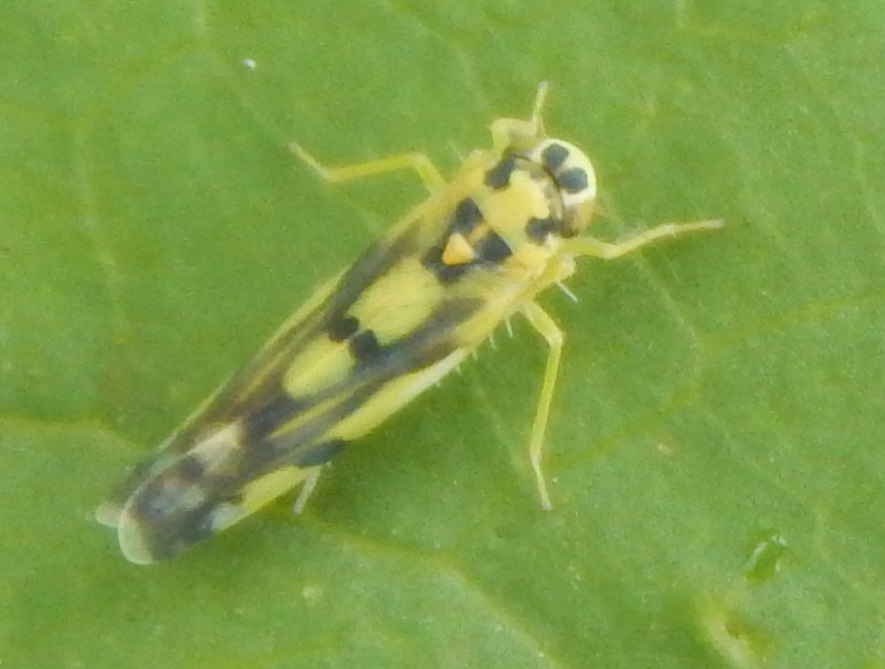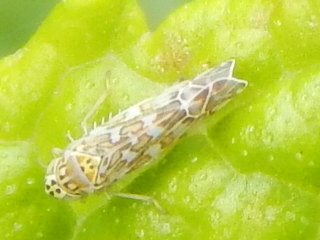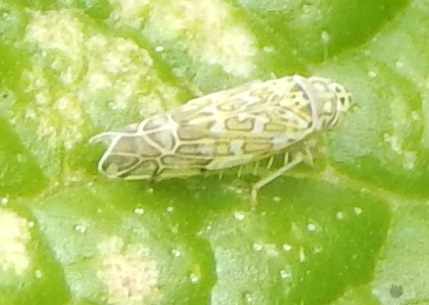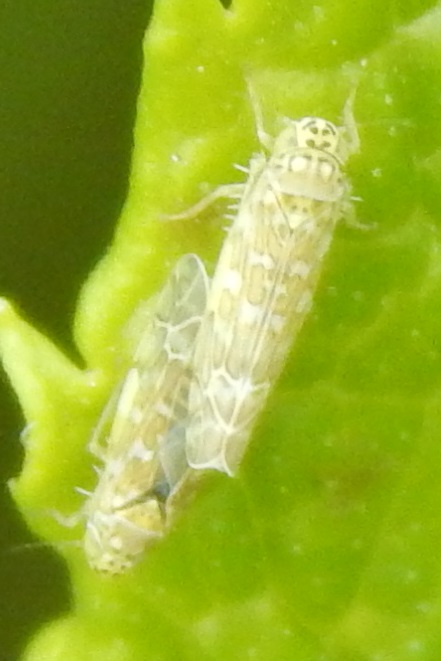
[140] Eupteryx aurata, Potato Leafhopper
Eupteryx decemnotata, Sage Leafhopper
Eupteryx urticae
Introduction
Eupteryx is a genus of Leafhoppers, small insects that may be found on leaves. There are about twenty species of Eupteryx that may be found in Britain. They are not usually given common names.
Taxonomy
Kingdom – Animals
Phylum – Arthropods
Class – Insects
Order – Hemiptera
Superfamily – Membracoidea
Family – Cicadellidae (Leafhoppers)
Subtribe – Eupterygina
Genus – Eupteryx
Scientific Name – Eupteryx aurata, Eupteryx decemnotata, Eupteryx urticae and others
Name
These tiny insects more or less live on leaves and they have hind legs modified for jumping so they are called leafhoppers. There are about 20 000 species so it is not surprising that they don’t all have common names.
The suffix ‘-pteryx’ basically means wing. The prefix ‘eu-’ means good or true. So, maybe ‘Eupteryx’ means that it really is a true insect (together with a million or so other species!) The Latin species epithets are golden (aurata) ten-marked (decemnotata) and relating to stinging nettle (urticae.)
Description
Like other members of Hemiptera, the leafhoppers are hemimetabolous Insects. They suck the plant sap from plants, grasses and trees. They are widely distributed over the World. Some are very specific as to their plant host and some are more general. There are other related bugs called treehoppers and froghoppers and they all look very similar unless you get a very close view. They are typically about 3 millimetres in length.
Leafhoppers within the genus Eupteryx may need very close examination to determine the species.
Eupteryx aurata
Sometimes called the Potato Leafhopper, this species is most often found on nettles and [306] Brambles.


Eupteryx decemnotata
This is common in Europe but not so common in the UK. It is usually found on Sage and may be called the Sage Leafhopper



Eupteryx urticae
This one is common and, as its Scientific Name suggests, it is most often found on [353] Stinging Nettles.


Other Notes
You will need a good camera with macro facility to photograph these insects but at least they generally keep still. When they do move, it an instantaneous jump and you may have to look hard to see where they landed.
As for most of my insects, I am helped by Facebook groups to identify species.
